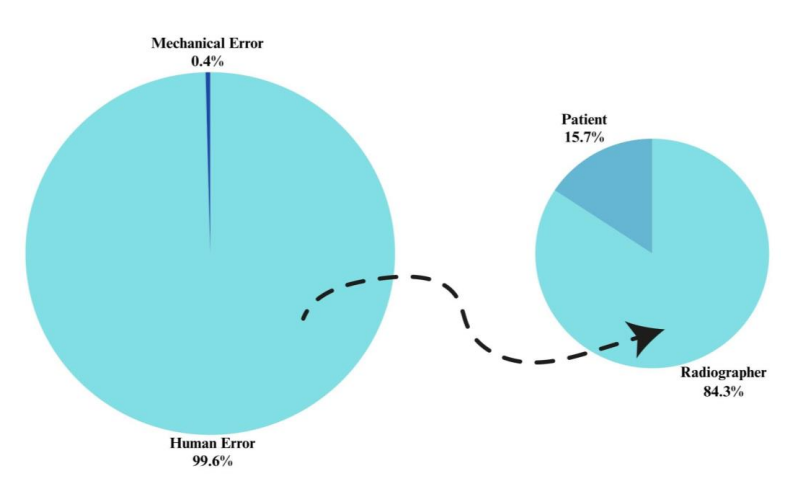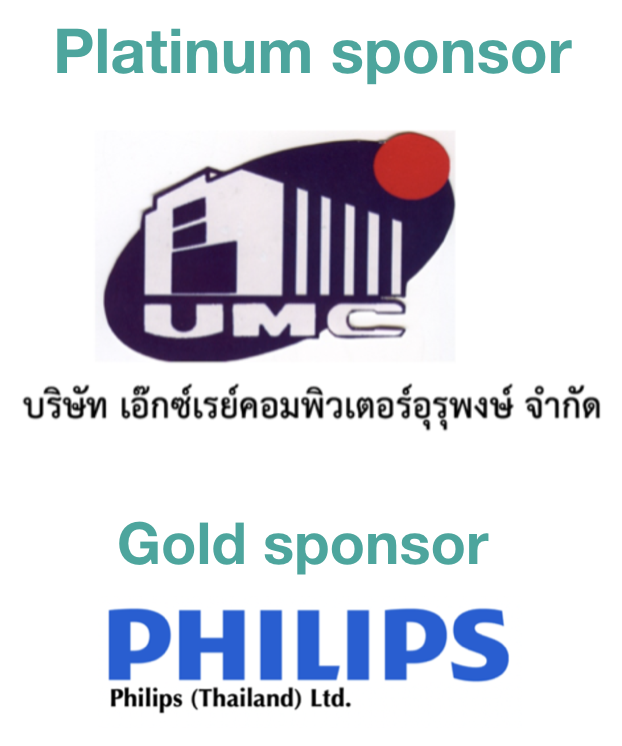Repeat film analysis and its implications for quality assurance in diagnostic radiology: An institutional case study
Keywords:
Repeat film analysis, Reject and usage analysis, chest x-rays, Quality assurance in diagnostic radiologyAbstract
The primary objective of this research was to analyze the rate of repeated chest examinations using the Reject and Usage Analysis tool program of the Samsung XGEO-GC80 X-ray machine. A retrospective study was conducted at King Chulalongkorn Memorial Hospital (KCMH) in the Department of Radiological Diagnostic. The study involved collecting statistics and closely examining the causes behind rejected images within the machine system. Among the key findings were Chest examinations accounted for the highest number of images, comprising 39.32% of the total 40,400 images. Repeated images were most prevalent in chest examinations, making up 32.21%of the 7,550 rejected images and 6.02% of all images. The primary reason for rejecting images was improper positioning, constituting 75.47% of all rejected images. In chest examinations, the most common reason for image rejection was improper breathing, contributing to 54.3% of all 1,321rejected images and 14.0% of all rejected images in the study. Furthermore, the study highlighted that a significant portion of X-ray image rejections resulted from human errors, primarily from radiological technologists. To reduce the rate of repeated imaging, the following recommendations were proposed for i) comprehensive evaluation of the patient's condition before the X-ray examination, ii) Ensuring proper patient positioning, iii) Implementation of various initiatives within the healthcare unit, including regular training for radiologists, and iv) Establishment of criteria for accepting radiographic images across all radiological technologists within the diagnostic department. In conclusion, these analyses are essential to enhance the quality of radiological services at KCMH, minimize image rejections, and ultimately improve patient care and radiation safety.
Downloads
References
Kjelle E, Chilanga C. The assessment of image quality and diagnostic value in X-ray images: a survey on radiographers' reasons for rejecting images. Insights Imaging. 2022;13(1):36.
Decoster R, Toomey R, Smits D, Haygood TM, Ryan ML. Understanding reasons for image rejection by radiologists and radiographers. J Med Radiat Sci. 2023;70(2):127-136.
Waaler D, Hofmann B. Image rejects/retakes--radiographic challenges. Radiat Prot Dosimetry. 2010;139(1-3):375-9.
Acharya S, Pai KM, Acharya S. Repeat film analysis and its implications for quality assurance in dental radiology: An institutional case study. Contemp Clin Dent. 2015;6(3):392-395.
Zewdu M, Kadir E, Berhane M. Analysis and Economic Implication of X-Ray Film Reject in Diagnostic Radiology Department of Jimma University Specialized Hospital, Southwest Ethiopia. Ethiop J Health Sci. 2017;27(4):421-426.
Jones AK, Heintz P, Geiser W, Goldman L, Jerjian K, Martin M, Peck D, Pfeiffer D, Ranger N, Yorkston J. Ongoing quality control in digital radiography: Report of AAPM Imaging Physics Committee Task Group 151. Med Phys. 2015;42(11):6658-70.
Lomax ME, Folkes LK, O'Neill P. Biological Consequences of Radiation-induced DNA Damage: Relevance to Radiotherapy. Clin Onco. 2013, 25(10):578-585.
Reisz JA, Bansal N, Qian J, Zhao W, Furdui CM. Effects of ionizing radiation on biological molecules--mechanisms of damage and emerging methods of detection. Antioxid Redox Signal. 2014; 21(2):260-292.
Park MY, Jung SE. Patient Dose Management: Focus on Practical Actions. J Korean Med Sci. 2016 Feb;31 Suppl 1(Suppl 1):S45-54.
Radiation protection of workers, Safe Work Information Note Series, Shengli Niu, April 2011, Information Note No. 1.
ICRPAEDIA. The system of radiological protection. Dose limits. (2019). Retrieved April 3, 2566, from http://icrpaedia.org/Dose_limits.
Atkinson S. Michael Neep, Deborah Starkey. Reject rate analysis in digital radiography: An Australian emergency imaging department case study. Med Rad Sci. 2020; 67:72-79.
Abed Al Nasser A. The rate of repeating X-rays in the medical centers of Jenin District/Palestine and how to reduce patient exposure to radiation. Polish Journal of Medical Physics and Engineering. 2018; 24: 33-36.
Iampa W, Jivapong S, Subinmongkol I, Chousangsuntorn K. Reduction of need for repeat chest x-rays caused by insufficient inspiration through enhanced patient communication. Arch AHS. 2021; 33(2): 42-47.
International Atomic Energy Agency. Comprehensive Clinical Audits of Diagnostic Radiology Practices: A Tool for Quality Improvement, IAEA Human Health Series No. 4, IAEA, Vienna (2010).
Goldman LW. Speed values, AEC performance evaluation, and quality control with digital receptors. In: Goldman LW, Yester MV, ed. Specifications, performance evaluations, and quality assurance of radiographic and fluoroscopic systems in the digital era. 1st ed: Medical Physics Publishing; 2004:272-297.
Henshaw ET. Quality assurance in diagnostic radiology--for its own sake or that of the patient. Qual Assur Health Care. 1990;2(3-4):213-8.

Downloads
Published
How to Cite
Issue
Section
License
Copyright (c) 2024 The Thai Society of Radiological Technologists

This work is licensed under a Creative Commons Attribution-NonCommercial-NoDerivatives 4.0 International License.
บทความที่ได้รับการตีพิมพ์เป็นลิขสิทธิ์ของสมาคมรังสีเทคนิคแห่งประเทศไทย (The Thai Society of Radiological Technologists)
ข้อความที่ปรากฏในบทความแต่ละเรื่องในวารสารวิชาการเล่มนี้เป็นความคิดเห็นส่วนตัวของผู้เขียนแต่ละท่านไม่เกี่ยวข้องกับสมาคมรังสีเทคนิคแห่งประเทศไทยและบุคคลากรท่านอื่น ๆในสมาคม ฯ แต่อย่างใด ความรับผิดชอบองค์ประกอบทั้งหมดของบทความแต่ละเรื่องเป็นของผู้เขียนแต่ละท่าน หากมีความผิดพลาดใดๆ ผู้เขียนแต่ละท่านจะรับผิดชอบบทความของตนเองแต่ผู้เดียว




